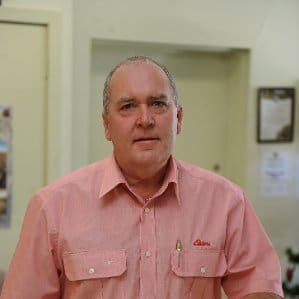
Elders Wool sales manager Andrew Combe.
SHEEP producers in all of Australia’s pastoral areas, including outback Queensland, were looking to increase their Merino flock numbers, an Elders survey has indicated.
Elders wool sales manager Andrew Combe said a recent survey of about 40 company branches in Victoria, South Australia, Qld, NSW and Western Australia showed that many producers were keeping an older age group of Merino ewes to produce another lamb and boost flock numbers.
Most were sticking to Merino ewes, with some decline in shedded sheep numbers, Mr Combe said, due to the comparative benefits of dual wool and meat income streams from Merinos.
In Queensland, a lack of shearers was a problem for some flocks, with owners forced to join a cue with the few contractors remaining, as the decline in state sheep numbers in recent years meant contractors had been unable to maintain staff numbers.
Click here to get the latest Sheep Central story links sent to your email inbox.
Mr Combe said the optimism around Merinos across all the states was due to the combination of good wool and prime lamb returns, with a 21 micron clip now worth about $1700-$1800 a bale while the Merino ewe is also producing a valuable wether lamb.
Mr Combe said the Elders survey did not indicate any trend among Merino producers to lower the micron of their flocks as a reaction to the improved fine wool prices. Instead most were continuing with the bloodlines that suited their country, meaning a mix of finer true-to-type and bolder crimping flocks would be maintained.
“It’s all about production and wool cut,” he said.
Some producers were trialling three shearings in two years, but this depended on the flock bloodline and management benefits, with most opting to maintain traditional shearing times due to the extra shearing and labour costs associated with more frequent shearing. The increased wool cut and return per head from a longer staple could outweigh any price discount for length, he said.
Mr Combe said the continued growth in Merino ewe numbers would depend on wool and sheep meat prices, seasonal conditions and availability of shearers, and in wild dog areas, the erection of wild dog exclusion fences.



HAVE YOUR SAY